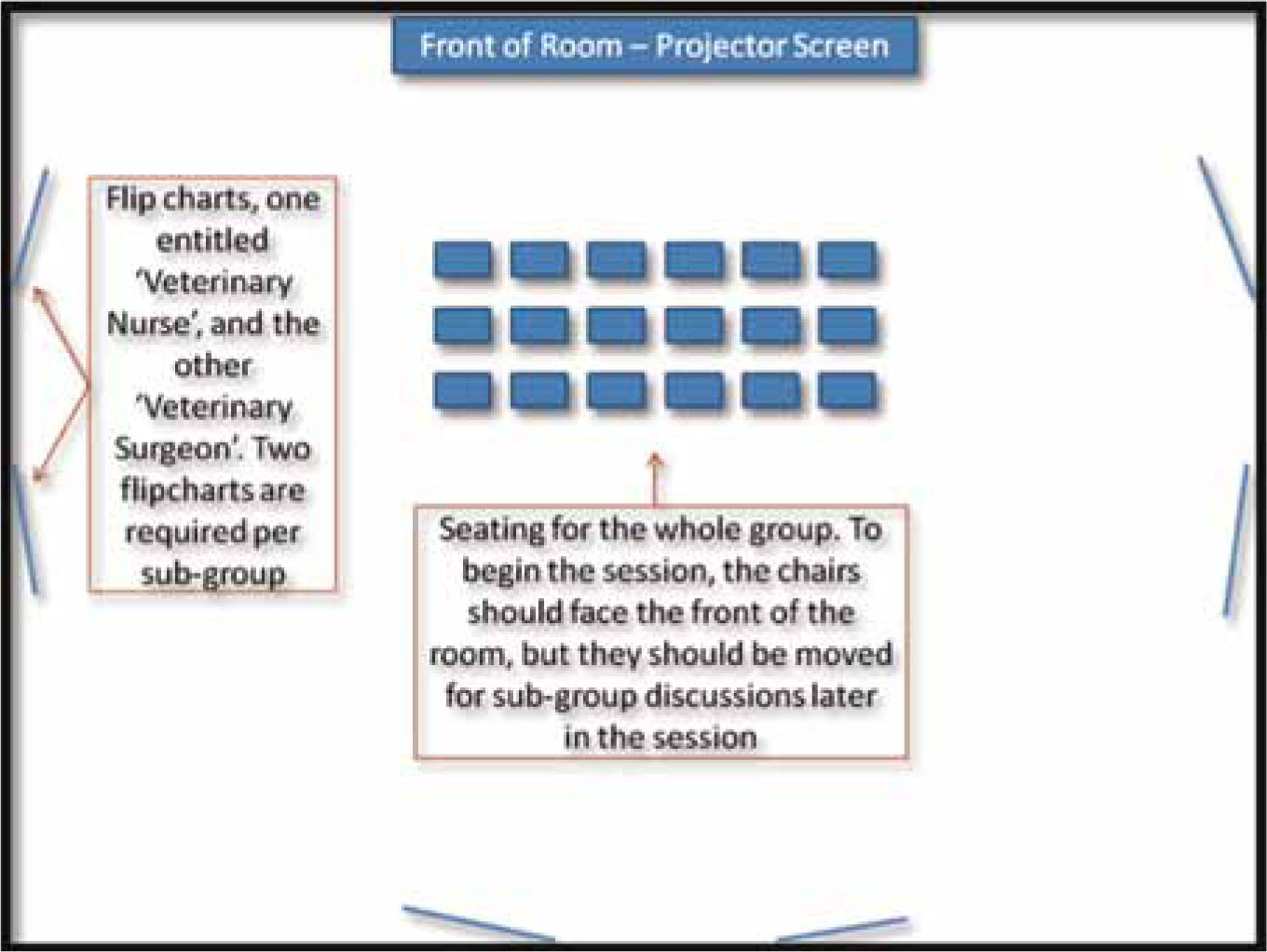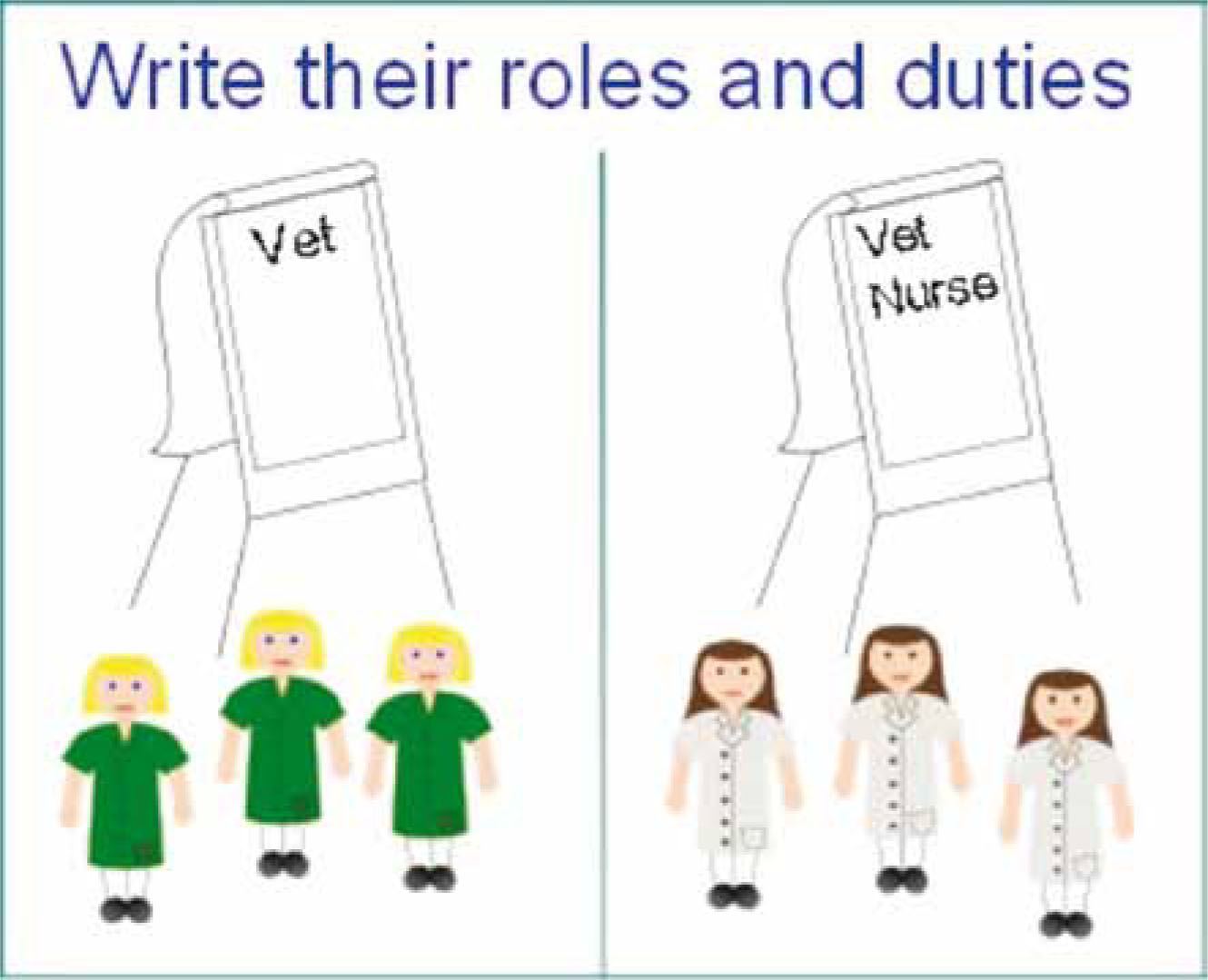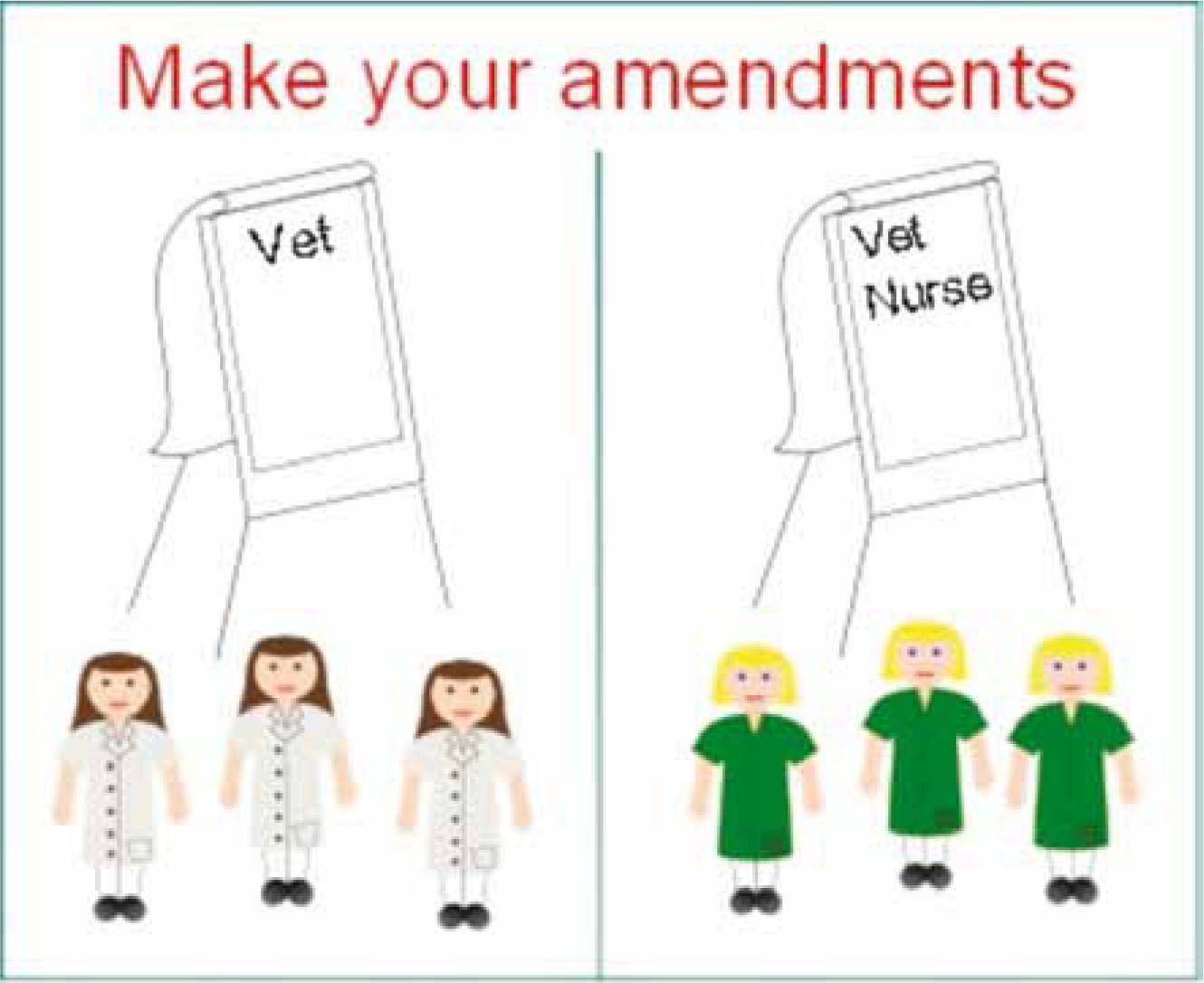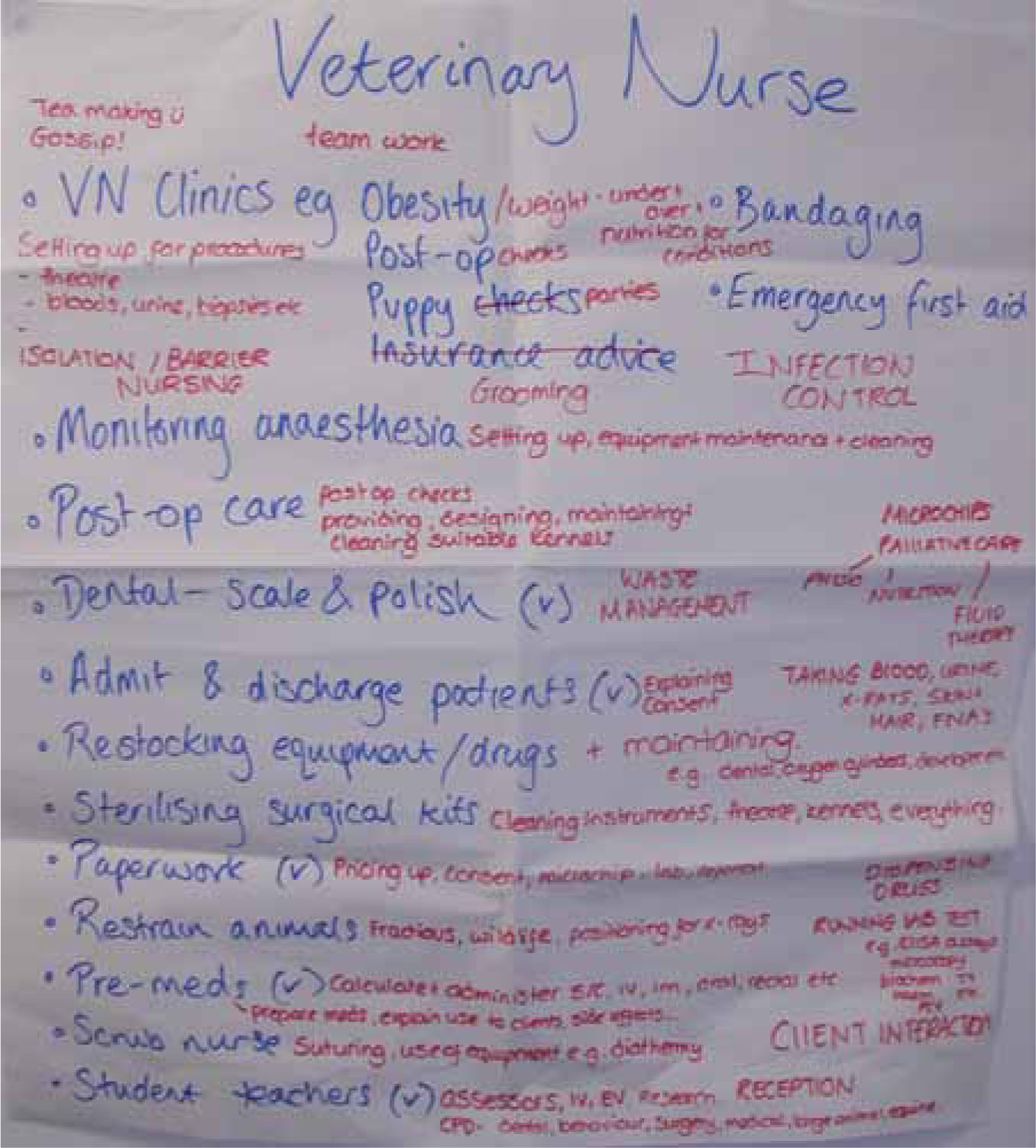Within the first volume of The Veterinary Nurse an article by Branscombe (2010) examined the concept and importance of interprofessional practice (IPP) and highlighted the key point that ‘interprofessional education is a significant factor in increasing awareness of other professions’. Described as occurring when individuals ‘from two or more professions learn about, from and with each other to enable effective collaboration and improve health outcomes’ (World Health Organisation, 2010), interprofessional education (IPE) is gaining increasing recognition and emphasis in the healthcare professions. The importance and signifi-cance of good teamwork would be evident to those who have worked in a hospital or veterinary practice. It is not only the medical skill of the individuals in a team, but also human factors such as communication skills, teamwork and an understanding of the roles of others, which if inadequate can lead to poor quality of care for the patient involved (Firth-Cozens, 2001; Cole and Crichton, 2006; Tokuda et al, 2011). IPE therefore aims to develop interprofessional skills for the mutual benefit of qualified professionals, students, patients and owners.
Research into IPE within the veterinary professions is sparse. Different concepts of the professional groups who would be involved in IPE exist, for example there are a small number of studies that have addressed the importance of veterinary students learning with and about human medical professions, e.g. in the context of disease prevention (Edwards et al, 2004; Hendrix et al, 2005; Waddell et al, 2010). A study which piloted IPE interventions with undergraduate veterinary students and veterinary nursing students has been published by the authors' team (Kinnison et al, 2011). Interprofessional skills have clear relevance to day-to-day tasks undertaken by every veterinary team and therefore IPE is also advisable post qualification. It may therefore be possible to take the concept of veterinary professions further to include receptionists, practice managers, animal behaviourists, animal care assistants and alternative therapists for example.
Introduction to Talking Walls
The present paper will focus on Talking Walls, a small group teaching technique, first described within interprofessional healthcare education by Parsell et al in 1998. A veterinary version of Talking Walls was one of the interventions developed and evaluated by the authors' team under the veterinary interprofessional education resources (vIPEr) project, funded by VET-NET LLN. It is a visual technique that allows small groups to work through tasks or problems, the results of which can then be shared with other participants. In a veterinary context, Talking Walls is ideal for two or more professions to explore their own and each other's roles and duties. It can be used as part of post-qualification continued professional development (CPD) or in-house training within a practice, or within undergraduate training at a university or college. With a greater understanding of the roles and abilities of the team members, it is expected that the effectiveness and efficiency of the veterinary team can be enhanced.
Running a Talking Walls session
The following paragraphs describe a Talking Walls session with two professions — veterinary nurses and veterinary surgeons. Any number of professions can take part, although the timing and equipment should be adjusted accordingly.
Participants
The group size will depend on the location available for the session. A room should be chosen that provides enough space to split up into smaller subgroups. Ideally, there would be an equal number of representatives from each professional group, however it is noted that this is not necessarily feasible (with different team ratios in practice and disproportionate veterinary nursing and veterinary surgeon students in undergraduate education).
Equipment
A few pieces of readily available equipment are required:

The Talking Walls session
The Talking Walls session should follow the outline given below:
A brief introduction to IPE and the Talking Walls session is required. Example PowerPoint slides are available to download at http://www.live.ac.uk/html/activities_interprofessional_learning.html.
If the group size is larger than six to eight individuals, it is advisable to split the group into sub-groups (Figure 2). Sub-groups must contain representatives of each profession (veterinary nurses and veterinary surgeons). It is preferable to have more than one member of each profession in each sub-group. Ideally, the sub-group size should not exceed eight.

Spread the sub-groups around the room with a flipchart (or large sheet of paper) for each profession. The sub-groups must then split again into the two professions. Ask the veterinary nurses to stand by the veterinary surgeon's flipchart and the veterinary surgeons to stand by the veterinary nurse's flipchart (Figure 3). In their uni-professional groups, the participants must write the roles and duties of the other profession on the flipchart with a neutral coloured marker pen (green/blue). The roles can be broad or specific and they do not have to be exclusive to that profession, i.e. both professions may have the general role ‘talk to clients’.

Ask the participants to swap around within their sub-group so that they are standing by their own profession's flipchart (Figure 4). They can now read what the other profession considers to be their roles and duties. Their task is to make corrections using a red marker pen. Any complete misconceptions should be deleted (with a single line so they are still legible), any amendments made (e.g. clarifying a role) and any missing roles or duties added.

An example of a flipchart created by undergraduate veterinary and veterinary nursing students can be seen in Figure 5. The flipchart represents a veterinary nurse's roles and duties. The veterinary students in the sub-group have written their perceptions of the veterinary nurse's roles and duties in blue, and the veterinary nursing students have made their corrections in red. As can be seen, the corrections mostly consist of additional roles, and humour plays a significant part in the session (‘Tea making© Gossip!’).

The two professions should be brought back together in their sub-groups around a table. Ask the veterinary nurses within each sub-group to go over their profession's flipchart, describing the roles and duties which the veterinary surgeons got right and wrong. The participants should clarify their corrections by exploring each other's previous expectations and explaining their opinions. This will encourage participants to overcome any prior assumptions and stereotypical views, and learn more about each other. Then ask the veterinary surgeons to take their turn going over their profession's flipchart. The facilitator is key in this instance for creating an atmosphere for sharing experiences and asking questions.
If there is time, and enough participants, a whole group discussion may be valuable. Create a circle of chairs and invite all sub-groups to come together with their flipcharts. Key areas for discussion include common misconceptions, inaccuracies and missing items between the sub-groups, the frequency of overlapping roles between the professions and the diversity of each profession's roles.
The total session usually lasts 1 to 1.5 hours.
Evaluating Talking Walls
Talking Walls was piloted with veterinary nursing students and veterinary students for the first time at the Royal Veterinary College (RVC) (Kinnison et al, 2011). It was evaluated through the Readiness for Interprofessional Learning Scale (RIPLS), a validated scale used in medical IPE (Parsell and Bligh, 1999). Twenty-one students took part in the evaluation (10 veterinary nursing students, 11 veterinary students) and completed the RIPLS survey before, immediately after and 4 to 5 months after the Talking Walls intervention. The RIPLS results demonstrated a sig-nificant improvement in attitude immediately post intervention in three important areas: teamwork and collaboration, professional identity, and client and patient centredness, indicating that the students were keener to learn with each other in the future and had a greater appreciation of the value of IPE with regards to post-qualification relationships. The survey's free text responses were very positive, for example one veterinary student said:
‘It was good to actually meet some vet nurses and hear a bit about what they do as we don't get much of a chance to integrate. It was also great to learn a bit more about what nurses can legally do as you don't learn a lot about that.’
Talking Walls sessions have been held with quali-fied veterinary nurses and veterinary surgeons; however the results of the sessions are yet to be evaluated formally. Anecdotally, the postgraduate sessions were as successful as those with undergraduate students.
Conclusions
IPE is a valuable resource for postgraduate and undergraduate veterinary professionals (veterinary nurses and veterinary surgeons), that aims to increase interprofessional skills for the benefits of the qualified professionals, students, patients and owners. Talking Walls (Parsell et al, 1998) is a form of IPE that allows veterinary nurses and veterinary surgeons to explore the roles of their own, and each other's, profession. The current paper describes the format of a Talking Walls session. It is a simple, low cost technique that uses flipcharts and coloured markers to create lists of the roles and duties of veterinary nurses and surgeons which are used as a basis for further discussion with the aim of overcoming any prior misconceptions of each other's roles. Within a practice, creating these lists can highlight roles that each profession are able to do, but are not currently given the opportunity to do. This may lead to a more efficient sharing of roles or task allocation within the practice team. Talking Walls has been evaluated with veterinary nursing and veterinary students at the RVC with positive results and a change in attitude towards the benefits of IPE for post-graduate relationships. PowerPoint presentations and information for facilitators for Talking Walls and other veterinary IPE resources can be found at http://www.live.ac.uk/html/activities_in-terprofessional_learning.html.
